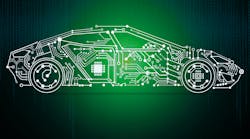The electrification of vehicles is driving major shifts in the automotive supply chain, where auto makers continue to invest in technology and in new facilities. According to WSJ, auto makers are gearing up to spend $225 billion over the next few years to develop new electric vehicles, and are partnering with and investing in battery makers to help provide the power.
For example, General Motors and LG Chem have joined forces to build a $2.3 billion battery-cell factory in Ohio. The new battery plant, which would employ more than 1,100 workers, would be among the world’s largest battery-cell factories, with capacity to manufacture enough batteries annually to produce more than 30 gigawatt hours.
With plans to introduce at least 20 electric models globally by 2023, GM is attempting to speed up its vehicle development and reduce costs. “The new facility will help us scale production and dramatically enhance EV profitability and affordability,” GM’s Mary Barra said.
Joining the Electrification Movement
Volkswagen’s supply chain is also evolving. The company plans to spend $1 billion on battery production, including a joint-venture investment with a Swedish startup, WSJ reports, and Tesla has established the Tesla Gigafactory 1 battery plant in Nevada in partnership with Panasonic. The factory produces lithium-ion battery packs for its electric vehicles and stationary storage systems from raw materials, such as copper and aluminum.
At its new battery plant, Tesla is leveraging a manufacturing model known as vertical integration, which allows companies to respond more quickly to consumer demand while potentially lowering the cost of parts and components, ThomasNet reports.
“One of the benefits of Tesla’s vertical integration strategy is increased local materials in its vehicles,” ThomasNet explains. “The company’s Gigafactory 1 was built for the sole purpose of assembling electric vehicle battery packs in the U.S., thus minimizing their reliance on overseas suppliers and reducing production costs.”
More Changes to Come
In assessing the future of Tesla’s supply chain, ThomasNet predicts that we’ll see even more vertical integration and in-house production. In 2019, for example, the company started making battery prototypes that incorporate new manufacturing techniques to mass-produce cells. “This move is meant to increase the company’s vertical integration process,” the company reports, “helping them to better control the scheduling and costing of its batteries and vehicles.”
In “Shift to electric vehicles will radically change auto factories”, Ian Thibodeau explains that GM and Ford will introduce dozens of battery-electric vehicles to compete in markets around the world over the next few years.
And while most experts don't expect electric vehicle sales to surpass those powered by conventional gasoline engines within the next three decades, the new-age propulsion threatens to disrupt a century-old manufacturing process that currently employs thousands.
A Future-Focused Industry
Thirty years from now, the world’s roads and the vehicles that traverse them may look and operate much differently than they do today. Currently, electric vehicles only make up 0.5% of the world’s vehicle fleet, but most automotive manufacturers plan to go completely electric by 2050, CNBC reports. By 2025, electric vehicles will make up 7% of all passenger car sales; by 2040, that figure will hit 38%.
The Center for Automotive Research doesn’t expect electric vehicles to account for more than 10% of the sales market until the late 2020s. For most of the next decade, automakers will have a blended manufacturing process for electric vehicles and gasoline or hybrid vehicles, Thibodeau reports.
“The more future-oriented vehicles likely will be produced in the same plants (sometimes on the same assembly lines when they are hybrid vehicles),” he writes, “as traditional cars and trucks with gasoline engines.”










